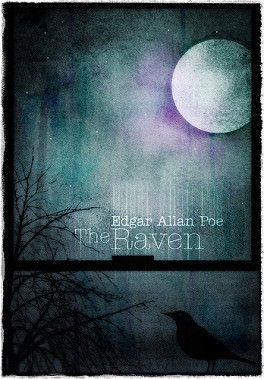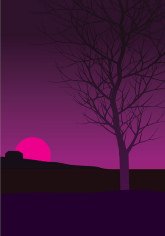The exhibition of the supreme fear of men
Edgar Allan Poe and Goethe facing the Terror of Death.
If poetry is an exhibition of the soul of the person who writes it and reflects who reads it, the poetry that raises its song about death is the exhibition of the supreme fear of men.

We all know, or have heard, of these two poets who in one way or another, between one style and another, print in their lyrics the greatest mysteries of humanity. And it is that between the light of Annabel Lee extinguished by envious angels of a love " which was more than love" ; and "Und leider!" the restlessness of a Faust that is lost in the abyss of everyday boredom, we can find similarities that revolve around the mystery of death if we read "The Raven" and "The King of the Elves" with the same penetrating look. It calls me a lot of attention that both poems have a similar narrative structure and that they are directed towards the theme of death as a center.
The first verses of "The Raven" have a narrative nuance in which the poet, almost touching the dream, "nearly napping", hears a knock on his door that leaves him in a state of alertness. Starting from that "tapping" unfolds an intrigue that increases as the verses advance: the intrigue of Poe to know who knocks at his door, the intrigue of not seeing anything but a shadow coming from a crow standing on his bust of Athena, the intrigue that every word directed towards that shadow or towards the shadow of that crow did not answer anything other than "Never again" ...

That intrigue I live, in my role as reader, every time I put my soul on those verses. And I wonder: what will the poet announce to the shadow? What will the poet announce with the crunch of a "Nevermore" ? Then I associate the crow on the bust of Pallas as the presence of death always hidden; as the absolute truth, more infallible, more shadow than any shadow ... and to think this, to feel this through Poe, comes immediately to my center the fear of fears. And although sometimes we shout to the fear of the fears: "Take thy beak from my heart, and take thy form from off my door" will always answer, whispering as softly as if it were an echo, "nevermore" ...
And with the same narrative nuance Goethe begins his poem "The King of the Elves" in which a father rides swiftly with his sick son in his arms. The child, touching the dreams that caress the sick, instead of seeing a crow, sees a king of elves, who whispers like Poe's shadow, calls him and encourages him to play, dance and sing with his daughters. The father, who sees the child with terror seized by his face, reassures him saying that what he sees and hears is not a king of elves, but a trail of mist: "Mein Sohn, es ist ein Nebelstreif".

ut the child does not stop seeing and hearing the songs of the king of elves, the image of death becomes so clear, so clear, that it hurts him. And although the father rides with more strength, when he arrives at his destination "the child was dead". And it is that the image of death appears in both poems denoting its maximum expression; although it is perceived as a shadow, it is heard as a crow and as an elf, and although we scream with horror to get away from our door and ride tirelessly to the shelter of our dwellings, she reaches us and turns off our eyes.
Yes, it's scary, but poetry does not want to be pink, it wants to be real.
Congratulations @mohanlal! You have received a personal award!
Click on the badge to view your Board of Honor.
Do not miss the last post from @steemitboard:
Congratulations @mohanlal! You received a personal award!
You can view your badges on your Steem Board and compare to others on the Steem Ranking
Do not miss the last post from @steemitboard:
Vote for @Steemitboard as a witness to get one more award and increased upvotes!